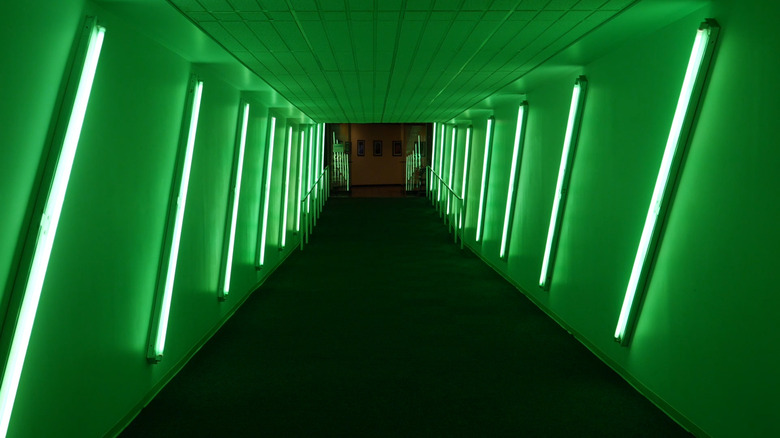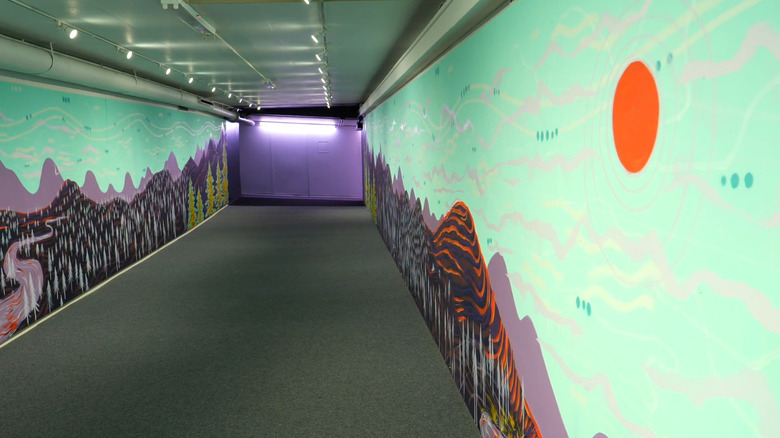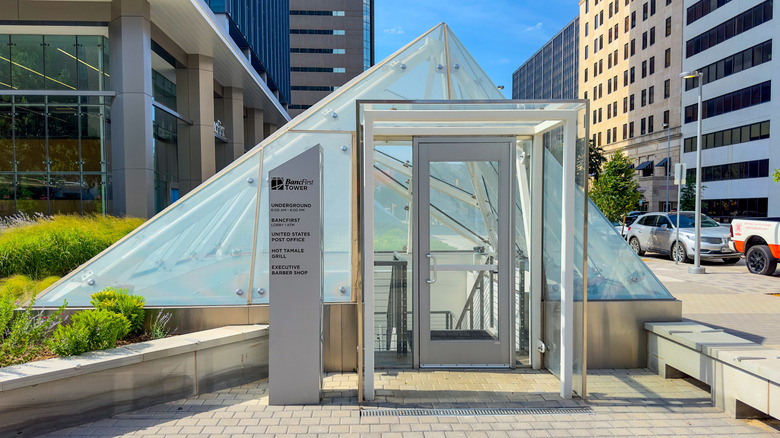Hidden Beneath Oklahoma City's Lively Streets Is A Unique Vibrant Tunnel System Full Of Art
Oklahoma City is an artsy cowboy culture destination with affordable prices, blending Western heritage with a cool, contemporary arts scene and modern attractions. In its downtown you'll find Bricktown, a walkable entertainment district with quirky shops and canal-side dining. But beyond the neon-lit streets and bustling avenues, one of the city's most fascinating attractions lies out of sight — unless you know where to look. Beneath Downtown Oklahoma City, a mile-long network of tunnels connects major buildings, creating a hidden world of color, history, and artistic installations.
The Oklahoma City Underground, originally opened in 1974 but repurposed in the 2000s, serves as both a functional walkway and an immersive art space extending over 20 city blocks. As you wander through, the tunnels glow with vibrant neon hues, illuminating murals of the state's landscapes, historic landmarks, and abstract installations. All the while, the tunnels provide a practical way to navigate downtown, linking key locations like Leadership Square and the First National Center while offering shelter from summer heat or winter storms. With over 20 discreet entrances scattered across the city — some of which may require a little sleuthing to find — there's an adventure waiting to unfold beneath the streets.
How Oklahoma City Underground became a colorful landmark
Oklahoma City's tunnels can be traced back to 1931 when W.B. Skirvin built a passage to connect his hotel to Skirvin Tower across the street. This early tunnel laid the groundwork for what would become a much larger project. In the 1970s, as part of an urban renewal effort, the tunnels expanded into a vast network called the Conncourse, named after banking executive and the project's sponsor Jack Conn. Designed by famed architect I.M. Pei — the mind behind the Louvre pyramid — the Underground was once a sleek and modern pedestrian thoroughfare. However, as the city's economy took a downturn in the 1980s, Downtown Oklahoma City saw a decline in foot traffic, and the tunnels faded into disuse.
That changed in 2006 when local architect Rand Elliott led a revitalization effort, rebranding the tunnels as the Underground. His vision transformed them into an artistic attraction by introducing color-coded sections, each representing different aspects of Oklahoma's history. You'll notice, for example, the green-lit corridors symbolize banking and commerce, while the golden-yellow sections highlight the state's ties to oil exploration. In these glowing pathways, nine areas house historic photographs and storytelling displays related to the area's respective theme. In 2008, Architect Magazine gave the project the award for "Best Use of Color" in architectural lighting. In addition to the underground portions, one part of the tunnel connects to a skywalk that links buildings across a street.
Finding your way into Oklahoma City Underground's hidden art walk
Part of the fun of exploring the Oklahoma City Underground is discovering its many hidden entrances. Some access points are tucked away in parking garages and stairwells, while others are cleverly marked by art installations. Some have clear signage, yet others are nondescript elevators or escalators. One of the easiest ways to enter is through the First National Center: Simply walk through the ground floor and past an exhibit on the building's history until you spot a stairway leading down. Another entrance at the Broadway-Kerr Garage is hard to miss, thanks to a striking steel sculpture called "Curious Organism." This alien-like structure extends from the street into the tunnel below, its twisting tendrils guiding visitors underground. Once inside, keep an eye out for "The Golden Hour," a string installation colored to mimic a sunset.
To reach Oklahoma City, Will Rogers World Airport, located a 15-minute drive from downtown, serves as the city's primary gateway. For road-trippers, Oklahoma City sits along a storied U.S. road trip route, Route 66, making the Underground a perfect detour for those exploring America's legendary highway. Two downtown hotels, the Skirvin-Hilton and Sheraton Hotel, have direct access to the tunnels, providing a convenient starting point for those staying overnight. Best of all, the Underground is completely free to explore, though ticketed guided tours are also available. Open Monday through Friday from 6 a.m. to 8 p.m., this secret world beneath the streets is a colorful and unexpected way to experience Oklahoma City.


